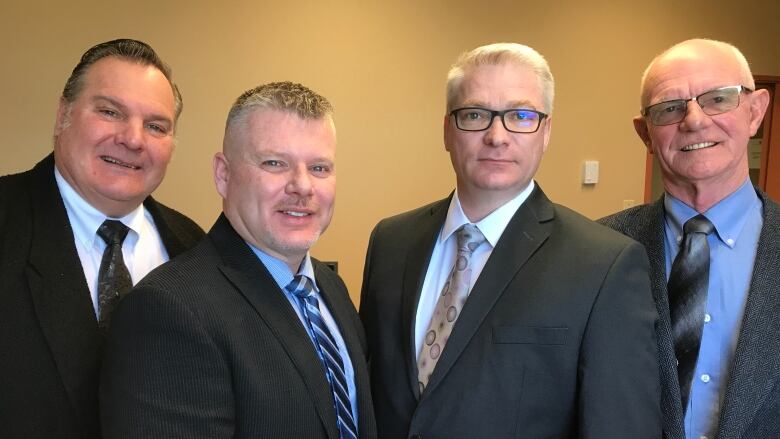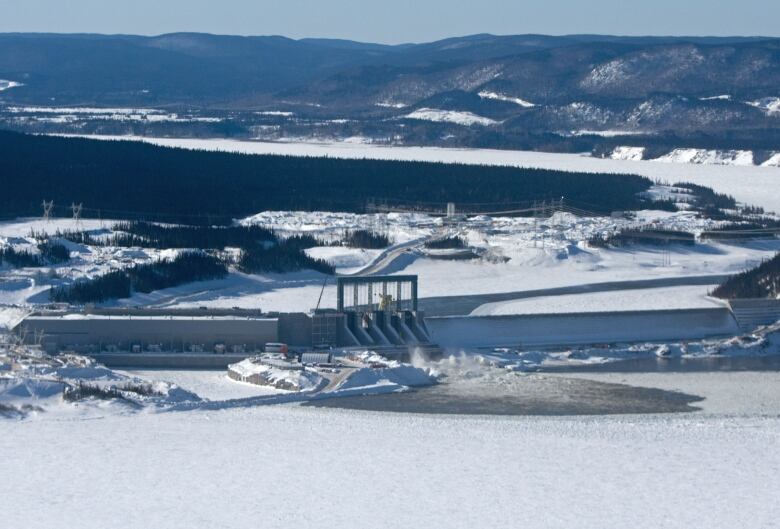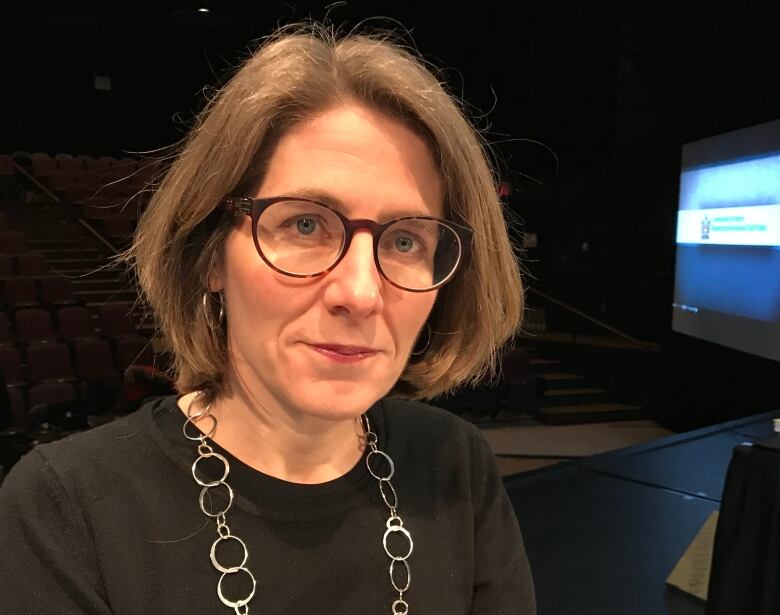Toilet brushes and windshield scrapers: Workers give blistering critique of Muskrat planning
Quality expert Ed Knox says production was a priority over safety and quality

Four construction workers with extensive experience throughout the world gave a blistering critique of the planning and prosecution of the Muskrat Falls hydro project during some very blunt testimony at a public inquiry in St. John's Friday.
Words like chaos, disorganization, poisonous and toxicwere used to describe the project's work environment, especially during the early days of construction.
In response to questions from inquiry co-counsel Kate O'Brien, one worker said safety and quality often took a back seat to progress.
And there were allegations of substandard quality assurance, of costly and time-consuming attempts to improve productivity that ended in failure, and of critical equipment such as the turbines beingexposed to the harsh Labrador elements because construction was so far behind schedule.
One of the biggest flaws we had was production versus quality. Obviously the No. 1 goal was production. Safety and quality came second.- Ed Knox
The phrase "poor planning" was a common response when the workers were asked their view on why the Nalcor-led project is billions overbudget and at least two years behind schedule.
"At Muskrat Falls we don't plan the work. We just execute. And whatever happens, happens," said carpenter Larry Cavaliere, who's been involved with the project since 2013 and is the only one of the four witnesses still working on the project.
"To me that was the main issue why there were cost overruns. The lack of knowing what you're going to be doing next, it's going to inherently bring you extra costs. It's chaos."

It was afull day of testimony heaping scorn on Astaldi Canada, the company hired in 2013 to build the generating station on the lower Churchill River, and much of it came from quality assurance expert Ed Knox, who left the project last fall after Astaldi was evicted from the project.
Knoxis one of dozens of former workers who is now suing Astaldi for severance and other payments. He gave the companyan "F" for "how they managed their personnel on site," and said it was clear from day onethat Astaldi was not prepared to work in a northern climateor operate on a Canadian unionized worksite.
"First when I came on site I could see the lack of planning, the disorganization within the management themselves," said Knox, noting that Astaldiwent through eight project managers during his time in Labrador.
Knox also gave a jaw-dropping example of how workers were sometimes assigned tasks, but without the proper tools. Before concrete is poured, for example, the surface must be cleared of any debris, and he witnessed a very unusual sight.

"When we're out there actually using toilet brushes and windshield scrapers to clean rock, to me that was a lack of planning obviously, and not the right tools for the job," he said.
And Knox didn't stop there.
There was intense pressure on Astaldi to get the project back on track after a difficult start, and Knox said this came at a cost.
"One of the biggest flaws we had was production versus quality. Obviously the No. 1 goal was production. Safety and quality came second," he said.
'We dropped a crane, nobody got hurt'
Cavaliere said it's fortunate that no one has been killed on the project.
"We lost a 40-tonnebeam, nobody got hurt. We lost some roof trusses, nobody got hurt. We dropped a crane, nobody got hurt. We lost a draft tube, nobody got hurt. We lost a rebar cage, nobody got hurt,"Cavaliere said.
"All these incidents, I'm telling you, could have easily been one or two dead, every one of them."
To me that was the main issue why there were cost overruns. The lack of knowing what you're going to be doing next, it's going to inherently bring you extra costs. It's chaos.- Carpeneter Larry Cavaliere
The inquiry has heard from dozens of witnesses since it began public hearings in September 2018, but Friday was the first time those who use the tools or monitor the work had a chance to speak.
And there was no holding back, with veteran electrician Ken White saying there was rampant nepotism on the project before he left in 2015.
"It seemed like a person with no qualifications could come in as a carpenter, the next day he was a foreman, the next week he was a general foreman, and probably a couple of weeks after that he was a superintendent," said White, who recently retired from construction.
"And of course blood is thicker than water, so what they'd do then is they'd hire their relatives, to be the general foreman and the foreman, regardless of qualifications. To me that created a pretty toxic environment."
Turbines exposed to the elements
Another quality assurance expert, Perry Snook, gave troubling details about the manufacturing and delivery of the four turbines that will form the heart of the power generating station when it begins producing power later this year.
He said it became clear very early that Muskrat was behind schedule, but there was no attempt to delay delivery of the turbines from China.

"They were shipped without having the final documentation submitted, approved and accepted prior to it getting on a boat," he said.
Nalcor had to scramble, he said, to come up with a plan to store the turbines. He said a protective coating was applied, but it became brittle in the harsh Labrador climate and flaked off.
"Then the surfaces had to be remediated, but that's on our dime because we approved it. We approved it to ship. We were taking care of the storage. We approved that preservation coating. It happened under our watch."
And how much is Nalcor paying a company to store the turbines?
"I'm not sure exactly what the number was, but for some reason I've got a million dollars a month in my head," said Snook.
And the workers had plenty to say about the infamous "dome" at Muskrat Falls.
Astaldiattempted to build what's called an integrated cover system, or ICS. The temporary structure would be heated, accommodate multiple overhead cranes, and protect workers and the concrete from the bone-chilling winter temperatures.

Cavaliere said he knew very quickly the idea would end in failure, and he was right.
"The size of that dome and the amount of work to be done in the little bit of time we had ... to me was not doable to begin with."
Cavalieresaid the dome was a very serious setback for the entire project.
"Ifthat time and effort had to have been put into the construction of the powerhouse and the spillway, we probably wouldn't be in the situation we are now. To me, we would have saved at least a year on the schedule, maybe more," he said.
The inquiry, meanwhile, will resume public hearings on Tuesday, March 19 with engineer Nik Argirovscheduled to testify.












_(720p).jpg)


 OFFICIAL HD MUSIC VIDEO.jpg)
.jpg)



























































































